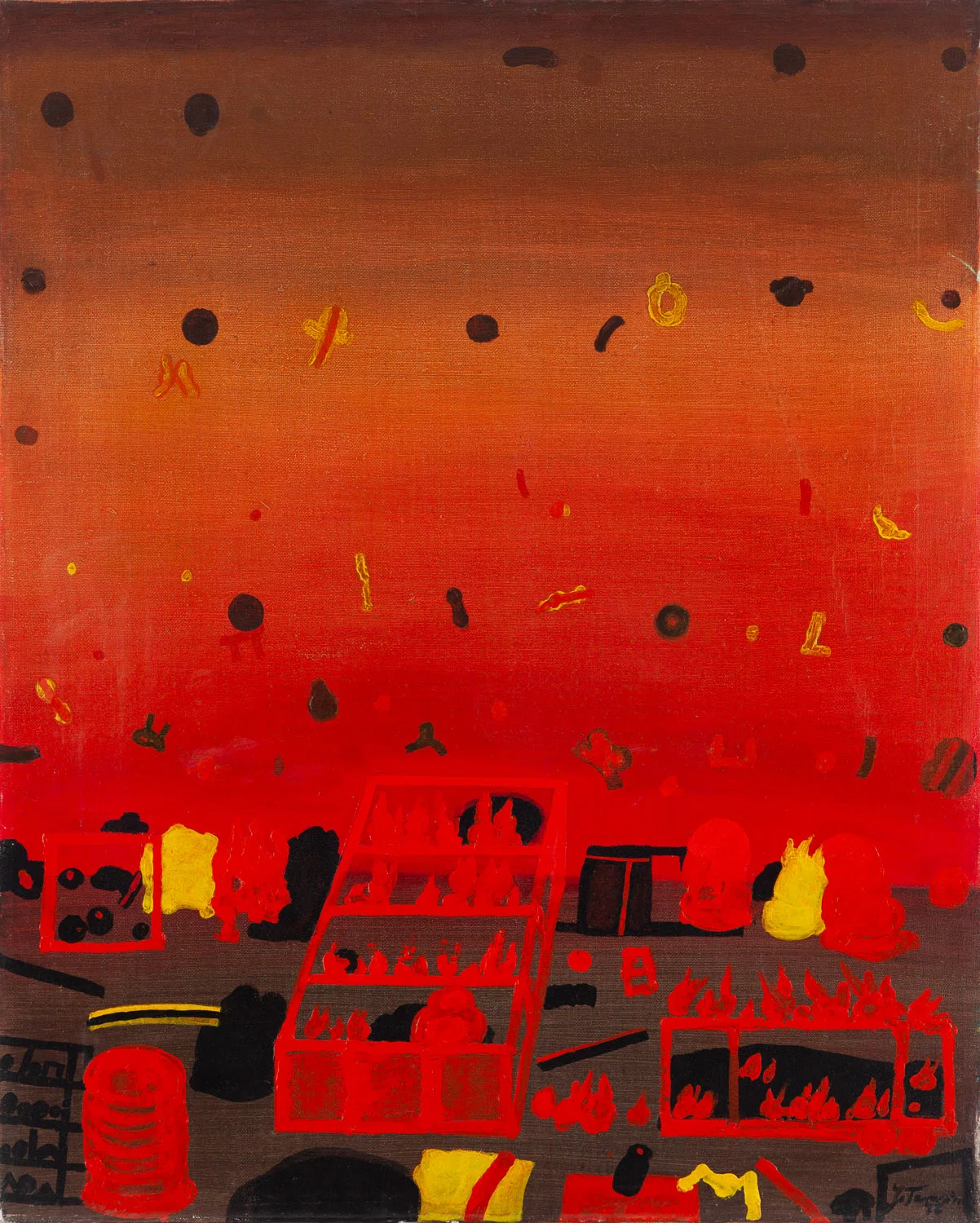Jan Tarasin - painter who put the world in order
"The world around us consists of many structures that overlap, interpenetrate, eradicate themselves, or subjugate one another. Their mutual relationships, the results of their activities, the tangled threads of their connections, as well as the magnitude and rhythm of the impulses that set them in motion; they all constitute a barrier that is as difficult to penetrate, fascinating, and limiting as the horizon around us. Breaking out of this closed circle shatters our definite but false sense of being the center of the world."
Jan Tarasin
Jan Tarasin is one of the most outstanding artists who shaped the modern art scene in Poland. The artist's contribution to post-war trends in painting is unquestionably priceless. More so, we are pleased to present you with his work from 1976 titled "Fire," which is undoubtedly a special piece in the artist's oeuvre and is included in the selection of the "Post-War and Contemporary Artists" auction.
Jan Tarasin's paintings, drawings, and screenprints from the 1970s present order through rhythmicized reality. The "Fire" series continues the creator's credo, namely the concept of "counted objects," which resounded in his work already in the middle of the previous decade. Tarasin remained faithful to this concept for the rest of his life. At that time, the artist moved away from figurative painting, the main motif of which was still life, and began to create illusory spaces filled with increasingly abstracted systems of forms. The realistic convention didn't fit the temperament of the young artist, who didn't want to be constrained by the experienced patterns and instead wanted to find new, more unrestricted solutions that were concentrated on emotional means of artistic expression. He started to construct his own reality rather than just describing and representing the outside world. This does not imply, however, that Tarasin completely rejected the rules of construction in his paintings; on the contrary, he upheld their rigor. This led to an artistic search for internal tensions between the shapes presented on the plane of the canvas, while also evoking a sense of movement within the composition. This is very evident in the work "Fire," where the placement of irregular spots of flame next to geometric shapes dynamize the entire composition. Contrary to other series, "Fire" features sharply defined objects that are opaque to the viewer but obvious in terms of materiality. The shapes of the displayed rectangles, squares, and tubes imply that they are man-made objects rather than creations of nature. Looking at the works in the series, we get the impression that fiery rays absorb the human-made objects, although it is difficult to give them specific names.
The series is full of seriousness and maturity. The artist divided the compositions into two zones, in which he placed the objects. Two coexisting but still distinct spaces are marked by the horizon line. Critics point out that the artist is referring to the idea of a human being existing on the border of two worlds: the earth, which represents our material reality, and the "beyond," which represents our immaterial reality. This demonstrates a sense of the world's duality. The fire absorbs the materials positioned below the line, and the heat it produces seems to carry the remaining signs in the air, which appear to be suspended. Through the use of deliberate painting measures, Tarasin was able to infuse this orderly world with a tense, anxious atmosphere.
Without a doubt, Jan Tarasin created a totally unique, original language of artistic expression that had no counterpart in post-war painting. By definition, the artist simplified and ultimately synthesized the forms of actual real-life situations, landscapes, and still life. Despite numerous attempts to link Tarasin's style to particular trends or currents in the history of art, such as matter painting, minimalism, or abstract art, he went down in history as an artist slipping away from all conventions and who, most importantly, was consistent in the execution of his creative strategy.



